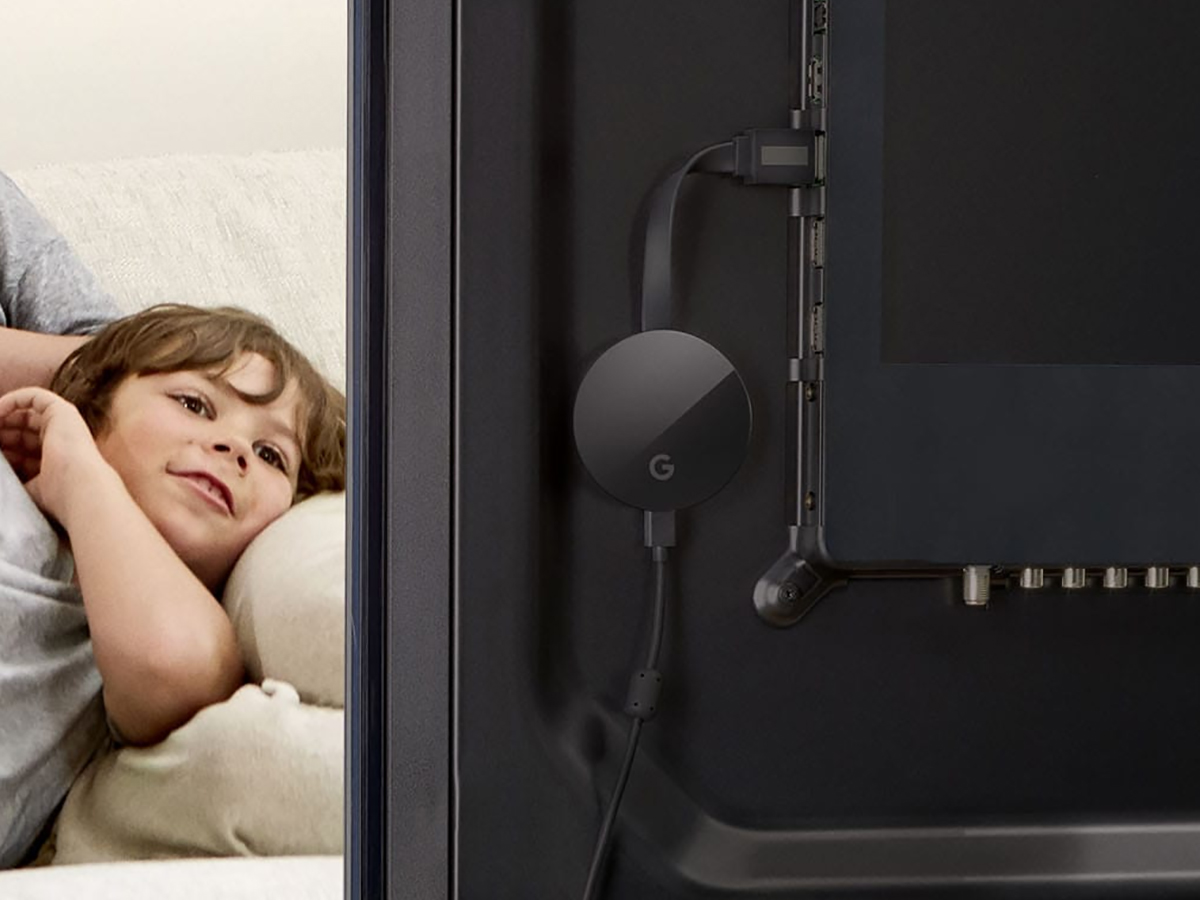

Google first introduced its cheap, capable Chromecast streaming device in 2013, followed by the more powerful (and expensive) Chromecast Ultra, which can handle 4K resolution and HDR effects, last year. Both versions look streamlined, take up little room, and offer easy set-ups through the Google Home app. Beyond this surface simplicity, however, the devices have some neat hidden tricks you can play around with. Here are five of our favorite ways to do more with your Chromecast.
1. Share with guests
When you first set up your Chromecast, you may notice the ability to enable “guest mode.” This allows your friends and family to stream media to your Chromecast even if they’re not logged onto the same Wi-Fi network as your device.
If you didn’t enable the feature at first, it’s not too late: Open the Google Home app and tap the Devices button on the top right, then the three vertical dots next to the Chromecast entry, then Guest Mode. Once you’ve turned it on, Guest Mode lets anyone send media to your device by entering a custom PIN that appears in the app. If you decide to block people again, you can disable guest mode by navigating back to the Guest Mode menu.
2. Link your Google Home
The Google Home smart speaker can work seamlessly with one or more Chromecasts. Once you’ve set up both your speaker and your streaming device(s), the Google Home app can coordinate actions between the two.
To play music, movies, or shows—no tapping or selecting required—simply say “OK Google” and tell your Home device to play whatever you want to see or hear on whatever you’ve named your Chromecast. For example, say “OK Google, play cat videos on the living room TV,” or “OK Google, play classical music on the bedroom TV.” (If you originally gave your Chromecast a confusing or unpronounceable name, this application gives you a good reason to change it—you can rename it in the Google Home app.)
When Google Home follows your commands, it will by default play videos on YouTube and music on Google Play Music. But you can add other options: Open the Google Home app and tap the menu button on the top left, then More settings, then Music or Videos and Photos. Here, you can select third-party apps, such as Netflix and Spotify, to link with your account. For more guidance on setting them up, read Google’s guide on playing TV shows and movies.
3. Browse the web on a bigger screen
While Chromecasts primarily stream audio and video straight from apps, you can also cast websites from the Google Chrome browser. This comes in handy for showing on-screen presentations, photo slideshows, and so on. But if you’re planning to cast music and movies, you’re better off using specific Chromecast-compatible apps.
First, make sure to connect your computer to the same Wi-Fi network as your Chromecast. Next, open the Chrome browser and hit the three dots on the top-right of the interface to access its menu. Choose Cast from the list, select your specific Chromecast, and the foremost browser tab should show up on the big screen. Once you’re done, stop casting by clicking the bright-blue Chromecast icon on the tab itself or by once again selecting the Cast option from the Chrome menu.
4. Display personal photos
By default, when your TV is on but you’re not actively streaming, your Chromecast will show a slideshow of eye-catching images curated by Google. But you can display your own snaps as the device screensaver instead.
To set it up, head into the Google Home app, tap the Devices button on the top right. When the list of connected devices appears, look for your Chromecast’s name and then hit the menu button (three vertical dots) next to it. From the list that appears, pick Backdrop settings. If you want to go back to the original backdrop behavior, tap the Remove your Backdrop preferences entry at the end of the menu.
You can enable images from three sources: Google Photos, Facebook, and Flickr. In each case, the app will prompt you to connect and verify your accounts so your Chromecast can access them. Alternatively, you can choose to see Google’s chosen images of artwork and space. And you can get more information about any picture shown on your device by tapping its entry in the Google Home app while the image is displayed.
5. Stream saved files
Chromecasts focus on streaming videos from online sources, but if you have video files saved on your computer, you can cast those to your television as well. All you need is some software help.
Take the Videostream extension for the computer version of Google Chrome. It lets you choose a video from your hard drive to immediately start casting it, and to control the playback from your computer or from the Videostream mobile apps (for Android and iOS). The service is free, though you can upgrade to a Premium account (from $1.49 a month) to get extra features like playlist and subtitle support.
Your second option is to set up the Plex software on the computer you want to use. Once you’ve connected the computer to the same Wi-Fi network as your Chromecast and set up Plex, you can stream your video files to your Chromecast device via the free Plex mobile apps (for Android or iOS).
